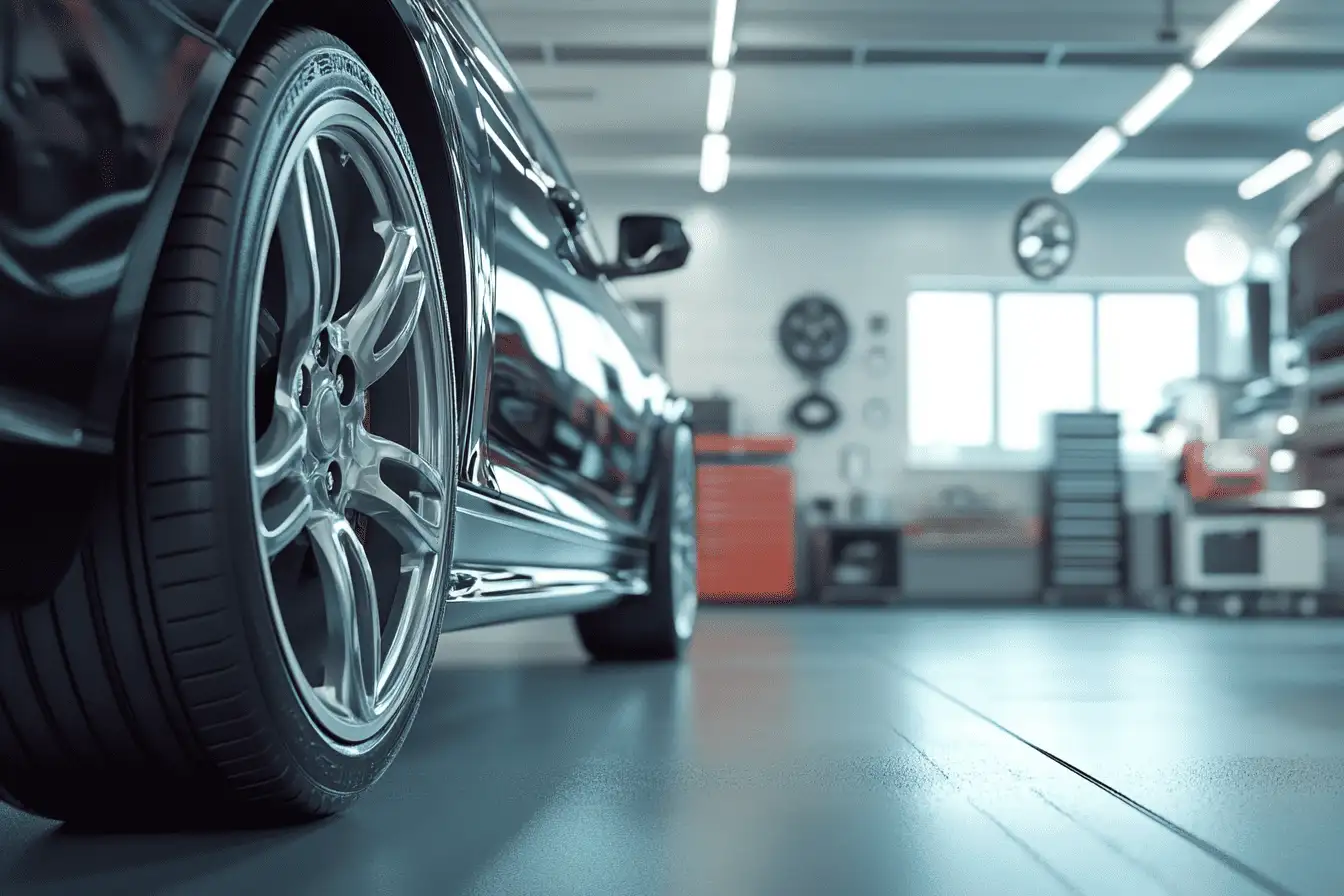
Here you can find out everything about hydraulic lifter replacement: How high is the hydraulic lifter replacement cost in the UK? What are the signs of a faulty hydraulic lifter? What happens if you drive with a broken hydraulic lifter? Plus: The best savings tips and where to get free quotes.
How much to replace a hydraulic lifter?
» Average hydraulic lifter replacement cost: £300 – £830
Example: Hydraulic lifter replacement cost – Vauxhall Astra | |
|---|---|
Overview | Costs |
New hydraulic lifter | £90 – £150 |
New oil filter | £15 – £25 |
New engine oil | £35 – £70 |
Labour cost | £220 – £400 |
Total costs | £435 – £645 |
Hydraulic lifter replacement cost – Sorted by car models
Below is a table with estimated values for popular car models in the UK. Please note that even with the same car model there may be differences.Often the hydraulic lifter replacement (or hydraulic valve lifter) is slightly cheaper for older editions of a model, than for newer cars because the individual parts are often installed more tightly. This increases the time needed for replacement and thus the labour costs.Hydraulic lifter replacement cost – Sorted by car models | |
|---|---|
Car model | Price range |
Alfa Romeo Giulietta • Alfa Romeo Mito • Chevrolet Spark • Chevrolet Matiz • Fiat 500 • Fiat Panda • Fiat Punto • Ford Fiesta • Ford Ka • Ford Escort • Hyundai i10 • Hyundai i20 • Kia Ceed • Kia Picanto • Kia Rio • Nissan Micra • Vauxhall Corsa • Vauxhall Meriva • Peugeot 206, 207, 208 • Renault Clio • Renault Twingo • Seat Altea • Seat Ibiza • Smart Fortwo • Toyota Corolla • Toyota Auris • Toyota Yaris • VW Fox • VW Lupo • VW Polo | £280 – £450 |
Audi A1, S1 • Audi A3, S3, RS3 • Citroen Berlingo • Citroen C3 • Citroen C4 • Citroen Jumper • Dacia Duster • Dacia Logan • Dacia Sandero • Ford Kuga • Ford Mondeo • Honda Civic • Honda Jazz • Hyundai Tucson • Kia Sportage • Mazda CX 5 • Mercedes A Klasse • Mazda CX 3 • Mini • Nissan Qashqai • Vauxhall Astra • Vauxhall Mokka • Vauxhall Vectra • Vauxhall Zafira • Peugeot 308, 3008 • Renault Kangoo • Renault Megane • Seat Alhambra • Seat Leon • Skoda Fabia • Skoda Octavia • Skoda Roomster • Skoda Superb • Skoda Yeti • Toyota Avensis • Toyota Prius • Volvo V60 • VW Passat • VW Tiguan • VW Golf 4, 5, 6, 7 | £400 – £700 |
Audi A4, S4, RS4 • Audi A5, S5, RS5 • Audi A6, S6, RS6 • Audi Q2 • Audi Q5 • BMW X1 • BMW 1er • BMW 2er • BMW 3er • BMW 5er • Fiat Ducato • Ford Focus • Ford Galaxy • Mercedes B Klasse • Mercedes C Klasse • Mercedes E Klasse • Mercedes GLK, GLC • Vauxhall Insignia • Porsche 911 • Rover 75 • Seat Alhambra • VW Caddy • VW Sharan • VW Touran • VW T5 | £650 – £900+ |
Hydraulic lifter replacement: What additional costs may arise?
Depending on the condition of the cambelt, it could make sense to change it at the same time, since in both cases the work involved (and the uncovering of the parts) accounts for the bulk of the costs. In some cases the pulleys and tensioners (+ up to £100) and the water pump (+ £90 – £250) may also be replaced.
If the camshaft has been damaged and a defective engine is at hand, the costs are considerably higher.
What is a hydraulic lifter? How do hydraulic lifter work?
The hydraulic lifter (or hydraulic tappet) is directly driven by the camshaft. The purpose of the hydraulic lifter is to compensate tiny deviations in valve clearance. This allows the opening and closing times of the valves to be kept to accurately. At the same time, the plunger eliminates the need for time-consuming valve clearance adjustments, improves engine performance and allows the engine to operate more smoothly. The hydraulic lifter is controlled by the camshaft lobes. Because the actual compensation inside the hydraulic lifter is effected by hydraulic oil, it always needs an optimal oil supply.Signs / Symptoms of a faulty hydraulic lifter
A noticeable symptom of a bad/faulty hydraulic lifter is a tapping / ticking / clicking noise coming from the engine. The tapping noise can be heard in a fast rhythm, which accelerates again when the engine is running.» Most common symptom: A striking tapping noise
Hydraulic lifter additive: An oil additive / oil exchange may also solve the problems With any luck, the mechanic will find that the hydraulic lifters do not need to be replaced. Sometimes it is enough to use a higher quality engine oil and simply exchange it for the old engine oil. Hydraulic lifter additive: Depending on the condition, the mechanic may also use an oil additive for a test. This is added to the engine oil and can in some cases ensure that the supposed symptoms disappear. In both cases we can speak of a best case scenario. |
Can I drive with a broken hydraulic lifter?
» Find a car garage as soon as possible!
In the car garage: How long to replace a hydraulic lifter?
» About 2 – 4 hours
Make sure that the hydraulic lifters are of original part quality! For safety reasons, it is always advisable to use parts in OEM (Original Equipment Manufacturer) quality. Your car garage will know which parts are suitable for which car model. However, it doesn’t hurt to ask for information yourself to make sure that quality branded goods are used. So always rely on original part quality – this increases the life span and minimizes the risk of a damaged engine. Well-known manufacturers of high-quality hydraulic lifters include: Febi Bilstein – Vaico – Triscan – Ina – JP Group – Topran – Ajusa – Kolbenschmidt – Blue Print – Ruville – Swag – Bugiad |
Hydraulic lifter: 6 Tips how to save money
1. Respond quickly at the first signs
If you react quickly once the first symptoms appear and go to a garage, you can save yourself a lot of money and trouble. Nobody wants to experience expensive subsequent damage. The probability of a damaged engine can increase with every kilometre driven.
2. Keep to oil change intervals
For a long service life of the hydraulic lifters, the recommended oil change intervals of the manufacturer should always be observed. In addition, the engine should always be run sufficiently warm. An oil change should be carried out on average every 2 years.
3. When buying a car: Watch out for signs of defective hydraulic tappets
When buying a used car: Ensure that the engine is started cold and has not been warmed up beforehand to determine if there are problems with the hydraulic lifter. It is then easier to hear the typical ticking noise if the car has a problem.
4. Rely on hydraulic lifters in original quality
This may sound like a paradox, but if you choose more expensive hydraulic lifters in original part quality, you will save money in the end. Quality brand parts have a longer service life than no-name parts.
5. Arrange a fixed-price for exchange
From time to time, unforeseen complications can occur which cause the exchange to take longer than expected. To avoid this being directly related to increased labour costs, a fixed price should always be agreed upon if possible.
6. Get free quotes to compare prices in your region
Even in the same city the hydraulic lifter replacement cost can vary significantly from car garage to car garage. To save time and effort and to find the best price-performance ratio, it is worthwhile to make a cost comparison before each visit to the garage and compare the prices in your area.










